How Contaminated Shoe's Soles Are
Wednesday, July 2, 2008
 GMA's full story can be found here
GMA's full story can be found here Back on January 29th,
I did a post regarding taking your shoes off in the house, intending to share 7 calming reasons why while you consider your home a sanctuary.
Good Morning America recently did a study for an entirely different reason, testing the shoe's capability of bringing in bacteria and its ability to spread it all over your carpets. The results were shocking.
Good Morning America decided to test the bottoms of eight different people's shoes, as well as two dogs' paws, for bacteria. One New Jersey mom they interviewed, Michelle Ciocon, told GMA she doesn't "really think that much about" taking shoes off upon entering her home. Her shoes, after being tested, contained the most bacteria of all — 66 million organisms.
Even though GMA's researchers contributed the depth of the contamination of Ciocon's shoes to her having "probably just stepped directly in something," the results troubled Ciocon. "I'm concerned," she said. "I'm going to make sure everyone takes their shoes off from now on. As soon as they get to that door, their shoes are going to be off."
As per GMA's report, researchers at the University of Arizona found nine different species of bacteria on people's shoes in a recent study. These types of bacteria can cause infections in our stomachs, eyes and lungs. This study also found bacteria live longer on our shoes than in other places. As we walk, we constantly pick up new debris that feeds the growth of more bacteria. It also appeared that it didn't matter whether the floor was tile, wood or carpet, although carpet seemed to harbor more bacteria. More than 90 percent of the time, researchers found bacteria would transfer from shoes to tile floors. Carpet was even more than that.
GMA's test results were found to be "dirtier than a toilet seat," said Jonathan Sexton, a research assistant at the University of Arizona's College of Public Health. "Toilet seats generally have 1,000 bacteria or less, and these are in the millions so there's a lot more bacteria here." That's pretty gross. Considering women all over the US have taken to squatting while using public restrooms to avoid germs, no one has been made fully aware of how much more monumentally dirty our own home's floors are because of our shoes.
Even worse, according to their research, children under age 2 are the most vulnerable to the germs we track into the house, because they play on the floor and put their hands in their mouths an average of 80 times an hour. With that level of bacteria on the floor, that's downright scary.
"That means that your child can possibly be exposed to every single bacteria that you picked up on your shoe [...] all the bacteria from the park, the store, everywhere you went that day," Sexton said to GMA.
Out of 10 tests GMA ran, nine of them contained coliform, a type of bacteria that comes mostly from human and animal waste. Scientists blame the floors of public restrooms and bird and dog droppings.
Experts say the easiest way to ensure that you don't track the germs on your shoe soles into your home is to leave your shoes at the door or carry them a nearby closet. Then you should wash your hands immediately after handling your shoes.
Researchers also found washing shoes in the washing machine on the cold cycle, with detergent, killed the bacteria. So for some shoes that might be an option. You can also wipe them with a disinfectant.
GMA also dealt with how to handle asking guests to remove their footwear upon entering your home, asking etiquette consultants how to handle these situations. One consultant suggested having a clean pair of slippers or socks available for them to wear instead. If you are entertaining in your home and someone refuses to take off their shoes or you don't know them well enough to ask them to do so, she suggested it might just be easier to do a big cleanup the next day, which you have to be prepared for when entertaining anyway. Another consultant pointed out that some people would rather not remove their shoes who may have a foot odor problem or ladies might be fearful of removing their shoes if they haven't had time for a pedicure. Circumstances like this would only make your guests feel self conscious and uncomfortable. Keeping in mind that part of entertaining in your home is cleaning up afterwards, should you choose not to ask guests to remove their shoes, be prepared for a massive floor cleaning extravaganze the next morning, as these might be reasons to not ask your guests to remove their shoes.
Personally, I like the sock or slipper idea, and if people feel awkward, I will make them aware of this study. It is, after all, my home, and your home we're talking about here.
Author: Lisa @ Crazy Adventures in Parenting » Comments:
SUV Hybrids? Sheesh!?
Monday, February 4, 2008
Do you recall the
gas shortage of the 1970's? Lines were down the road, hours long, to get gas. Prices back then went from 30 cents to 70 cents overnight, and while that sounds like a dream to us now, it was a nightmare back then. Suddenly we had to come up with alternate ways to get around. Bicycling became cool again, and it seems we were taking a more greener stance. We even started importing vehicles, which were smaller and more economical in gas mileage. We went from big metal clunkers to smaller, trimmer, gas efficient imported cars. We were being smart as a nation, making the best out of a bad situation. It was announced sometime in the 80's that we maybe had 50 more years of gas, that was about it. Well, its 2008, and where are we? Gas prices are $3 a gallon, and what are we doing? Sure, hybrids are coming out, but we're not only continuing to make SUV's, we're making
HYBRID SUVS. Nevermind trying to convince our nation that bigger isn't better, and getting them to back away from the clunkers of the 21st century - let's just make bigger better for the environment. Ugh, does this sicken anyone else like it sickens me???
Author: Lisa @ Crazy Adventures in Parenting » Comments:
Chemicals in Baby Products Raise Concern
By LINDSEY TANNER AP Medical WriterCHICAGO (AP) — Baby shampoos, lotions and powders may expose infants to chemicals that have been linked with possible reproductive problems, a small study suggests.
The chemicals, called phthalates, are found in many ordinary products including cosmetics, toys, vinyl flooring and medical supplies. They are used to stabilize fragrances and make plastics flexible.
In the study, they were found in elevated levels in the urine of babies who'd been recently shampooed, powdered or lotioned with baby products.
Phthalates (pronounced thowl-ates) are under attack by some environmental advocacy groups, but experts are uncertain what dangers, if any, they might pose. The federal government doesn't limit their use, although California and some countries have restricted their use.
Animal studies have suggested that phthalates can cause reproductive birth defects and some activists believe they may cause reproductive problems in boys and early puberty in girls.
Rigorous scientific evidence in human studies is lacking. The current study offers no direct evidence that products the infants used contained phthalates, and no evidence that the chemicals in the babies' urine caused any harm. Still, the results worried environmental groups that support restrictions on these chemicals.
"There is an obvious need for laws that force the beauty industry to clean up its act," said Stacy Malkan of Health Care Without Harm.
The study's lead author, Dr. Sheela Sathyanarayana, a University of Washington pediatrician, said, "The bottom line is that these chemicals likely do exist in products that we're commonly using on our children and they potentially could cause health effects."
Babies don't usually need special lotions and powders, and water alone or shampoo in very small amounts is generally enough to clean infant hair, Sathyanarayana said.
Concerned parents can seek products labeled "phthalate-free," or check labels for common phthalates, including DEP and DEHP.
But the chemicals often don't appear on product labels. That's because retail products aren't required to list individual ingredients of fragrances, which are a common phthalate source.
The Food and Drug Administration "has no compelling evidence that phthalates pose a safety risk when used in cosmetics," spokeswoman Stephanie Kwisnek said. "Should new data emerge, we will inform the public as well as the industry."
The federal Centers for Disease Control and Prevention says the health effects in humans are uncertain.
"Although several studies in people have explored possible associations with developmental and reproductive outcomes (semen quality, genital development in boys, shortened pregnancy, and premature breast development in young girls), more research is needed," a 2005 CDC report said.
The new study, which appears in February's issue of the journal Pediatrics, involved 163 babies. Most were white, ages 2 to 28 months and living in California, Minnesota and Missouri.
The researchers measured levels of several phthalates in urine from diapers. They also asked the mothers about use in the previous 24 hours of baby products including lotions, powders, diaper creams and baby wipes.
All urine samples had detectable levels of at least one phthalate, and most had levels of several more. The highest levels were linked with shampoos, lotions and powders, and were most prevalent in babies younger than 8 months.
John Bailey, chief scientist at the Personal Care Products Council, questioned the methods and said the phthalates could have come from diapers, lab materials or other sources.
"Unfortunately, the researchers of this study did not test baby care products for the presence of phthalates or control for other possible routes of exposure," Bailey said.
———
Pediatrics:
www.pediatrics.orgFDA:
www.cfsan.fda.gov/dms/cos-phth.html.comSource:
http://embarqmail.com/news/news_reader.php?storyid=15792545&feedid=248
Author: Lisa @ Crazy Adventures in Parenting » Comments:
Remove Your Shoes on Entering? 7 Reasons Why
Tuesday, January 29, 2008
 Original Source Care2Adapted from Japanese Style, by Sunamita Lim (Gibbs Smith Publisher, 2007).
Original Source Care2Adapted from Japanese Style, by Sunamita Lim (Gibbs Smith Publisher, 2007).
Do you remove your shoes on entering your home? Many of us who are not culturally predisposed to this activity avoid thinking about it because we are conflicted about starting a daily routine that you would then need to impose on others.
SIMPLE SOLUTION: There are many kinds of sanctuary this routine can bring, and here are seven:
Natural Style, Easy GraceFrom Dutch homes of the 15th century, where it was not permissible to set foot in a room without first removing one's shoes, to removing shoes at the front door in most Asian homes as a mark of respect to the house and to honor its cleanliness and purity, taking off one's shoes at the front door can be a deeply ingrained cultural habit.
For those of us who don't share this habit, a good reason to consider initiating it is grounded in the pollutants they carry in from the outside world.
The benefits of removing shoes are many, including:
- Taking off one's shoes at the door can be a simple celebration of everyday life, as easy as kicking off your shoes at the front door to symbolize leaving behind the harried outer world, then lighting incense and being soothed by the subtle aroma of lavender wafting through the house.
- Less dirt and small rocks gouge our floors, gently buffed by bare feet in the warmer seasons and by softly slippered feet in the cooler months.
- Bare feet are treated to the comforting sensation of walking on smooth wood, or other flooring, an uncommon experience in itself.
- Less time is spent cleaning the floor.
- Infants and young children with more sensitive immune systems inhale cleaner indoor air.
- A healthier home is ensured because shoes track in lead, pesticides and other pollutants, contaminating carpets and floors, turning a home into a toxic place for pets and young children, especially, who spend more time on the floor.
- Shoes in Japan are left in the foyer, and traded for house slippers, with the gesture being both symbolic and a conscious desire to leave behind the outer world by shedding, literally, the first obvious steps—shoes.
- Home is seen as a separate, special place, a sanctuary.
Author: Lisa @ Crazy Adventures in Parenting » Comments:
Cinch Inch Loss!
Sunday, January 27, 2008
Well, I'm up to 10 inches lost in 3 weeks! Yeehaw!!
Cinch Shakes and the
Meal-in-a-Bars, along with a modified healthy diet, with well spaced out mini meals a day, it's working wonders for me! I don't overstuff myself, I eat small meals every couple of hours to keep my metabolism on fire, or instead of eating something I
drink a shake or have a
Meal-in-a-Bar. I don't have a scale, but I do believe I'm close to losing 10 lbs as well! Woohoo! Here's my favorite way to make the
Cinch Shakes. Feel free to do what you like :)
2 scoops of
Cinch, chocolate or vanilla
1 tbsp reduce fat organic peanut butter
1 tbsp organic local honey
1 tbsp cinnamon
8 oz of organic milk
1 ripe organic banana
serving
Optiflora5 ice cubes
Blend and enjoy! I find the combination of these makes for one yummy shake, that not only tastes good but is just oh so good for you too!
Author: Lisa @ Crazy Adventures in Parenting » Comments:
Shaklee - Best of 2007 and beyond?
Tuesday, January 8, 2008
Shaklee is not the world's best kept secret anymore. Going green is becoming more mainstream, and Shaklee is leading the way. Several appearances on
Oprah,
Time Magazine,
The Oscars ,
Emmys,
Family Circle,
Women's Day- what's next?
The word is out - Shaklee is 'in'. Join the Green Revolution with us! Check these out!
Shaklee in the News
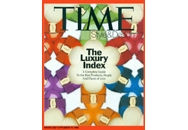 Shaklee, Roger Barnett and Get Clean™ in TIME Magazine!
Shaklee, Roger Barnett and Get Clean™ in TIME Magazine! The Winter 2007 issue of TIME Style and Design features a three-page article on Shaklee and Chairman & CEO Roger Barnett including photos of Roger, one of Sloan Barnett’s Real Dirt on Clean parties and the entire Get Clean line
click here to download pdf Woman’s Day Gives Readers Get Clean for the Holidays
Woman’s Day Gives Readers Get Clean for the Holidays
Woman’s Day magazine featured the Get Clean Starter Kit in a giveaway in its Christmas 2007 issue to help readers get a clean start.
click here to download pdf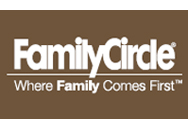 As seen in Family Circle magazine
As seen in Family Circle magazine
BestWater Featured in Family Circle
Shaklee BestWater 82300 is featured as a “water purifier for every budget” in Family Circle’s August 2007 issue.
click here to download pdf
 Shaklee Chosen as “One to Grow On” by Fast Company
Shaklee Chosen as “One to Grow On” by Fast CompanyFast Company chose Shaklee Get Clean™ as a line of eco-cleaners that are comparably priced and much safer for office workers, highlighting the AutoShip delivery program for businesses.
click here to read more 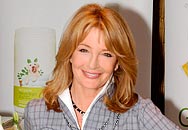 Get Clean™- At the Emmy’s September 2007
Get Clean™- At the Emmy’s September 2007
Shaklee® Get Clean™ was featured at the first Green ’07 Emmy Awards, in the prestigious Green Gifting Suite. Shaklee made a big splash as celebrities and media crowded around the Get Clean™ booth to learn more about our company and products.
click here to read more  O at Home Sets Designs on Shaklee
O at Home Sets Designs on Shaklee
Shaklee Get Clean™ Fresh Laundry Concentrate and Shaklee Get Clean™ Soft Fabric Fragrance Free Dryer Sheets were featured in O at Home’s makeover of a two-bedroom apartment.
click here to download pdf
 Shaklee Included in All You’s Best-Ever Cleaning Shortcuts
Shaklee Included in All You’s Best-Ever Cleaning ShortcutsThe editors at All You recommended Shaklee Get Clean™ Scour Off Heavy-Duty Paste as a way to get rid of dried food splatters.
click here to download pdf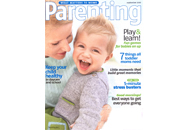 Shaklee is Parenting’s “Tipsntrends” Top Pick
Shaklee is Parenting’s “Tipsntrends” Top PickParenting chose Shaklee Get Clean™ Basic H²™ Organic Super Cleaning Concentrate as the top pick in its “Kid Stuff” special feature, touting the cleaner as a safer alternative.
click here to download pdf
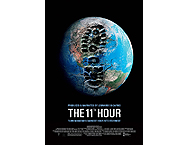 Shaklee Partners with The 11th Hour
Shaklee Partners with The 11th Hour
Shaklee was selected as a partner by the producers of The 11th Hour due to our exemplary track record for environmental leadership. The 11th Hour, a film produced and narrated by environmentalists Leonardo DiCaprio, Leila Conners Petersen, and Nadia Conners, documents the adverse affects of climate change but offers hope and solutions that inspire others to take action and harmonize with nature. A profile of Shaklee and an interview with Roger Barnett will be posted on the film's Web site which is expected to get nearly 100,000 hits per month!
Click here for the film trailerClick here for The 11th Hour Action WebsiteShaklee Featured on Good Morning AmericaOn July 12th, on ABC’s popular Good Morning America television show, workplace expert recommended direct-selling as a smart, flexible career choice. She listed Shaklee Corporation, the number one natural nutrition company in the United States, as a great partner for people considering direct-selling, with competitive start-up costs and a passionate sales force committed to environmentally friendly products and practices.
click here to watch the piececlick here to download the media release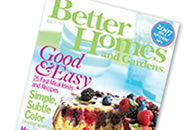 Shaklee's Get Clean Products featured in "Stocking Up On The Green"
Shaklee's Get Clean Products featured in "Stocking Up On The Green" August issue of Better Homes and Gardens now on newsstands, which reaches over 7,607,694 homes features Get Clean™ products. Buy your copy today!
click here to download pdfSent with permission from Better Homes and Gardens© magazine. Copyright Meredith Corporation 2007. All rights reserved.
 Shaklee's Get Clean Products featured in Wag Magazine
Shaklee's Get Clean Products featured in Wag MagazineA publication for dog lovers, showcased Nature Bright® in its Spring Cleaning feature, calling the product safe for the environment and pets.
click here to download pdf
 Cinch in Health Magazine
Cinch in Health MagazineCinch was featured in the May issue of Health Magazine, where the editors commented favorably on the line, noting "It isn't often we find a weight-loss system that we like, but Shaklee has developed a new line of products that caught our eye…"
click here to view the articleShaklee’s Get Clean Products on OprahOn April 20, 2007 in celebration of Earth Day, Shaklee’s Get Clean products were featured on The Oprah Winfrey Show. Get Clean products were celebrated for being safe, non-toxic and for creating a positive health impact for your family. This national recognition is proving to be another landmark event in the company’s history!
click here to watch the video
Author: Lisa @ Crazy Adventures in Parenting » Comments:
‘Grease cars’ — the answer to high gas prices?
Monday, January 7, 2008
Do-it-yourself ‘greasers’ drive diesel vehicles that also burn vegetable oil- Valentin Humer, president & CEO of Food & Vine, pumps recycled grapeseed oil into his Mercedes diesel in Napa, Calif. By Robin LloydMSNBC.com
By Robin LloydMSNBC.comMove over gas-guzzlers. Make way for grease cars, the latest do-it-yourself auto trend for eco-conscious drivers.
Grease cars are diesel vehicles converted to also burn leftover food-grade vegetable oil (aka SVO for straight vegetable oil), which you can often get free from local restaurants. Grease car conversions and fueling take some leg work, but advocates say in the end you save money, help the environment and consume less "foreign oil."
The first grease cars were developed in 1980 on a Volkswagen Golf in Germany, according to Elsbett.com, but thousands of Americans have grease cars nowadays, said Cynthia Shelton, director of the California-based National VegOil Board.
Some "greasers" are financially motivated, while others, such as conservation biologist Sacha Spector and his writer wife Daphne Uviller, converted to take global-warming matters into their own hands.
"Last January, I was out on my lawn and it was 70-something degrees, and I was thinking, 'I've got to be part of the solution. This is ridiculous,'" Spector said.
The couple traded in their gasoline-fueled car for a used Volkswagen diesel wagon, bought a conversion kit (these start at about $1,000), installed it (take a weekend to do it at home or pay a master installer another $1,000) and they've been happy grease car drivers for the past few months.
Homework required
Here's how greasers do it: First, they line up a waste oil source in advance. You don't want to convert your car and then scramble for fuel. Contact local restaurants to reach an agreement. Some restaurants pay to have the oil carted away so they might be pleased for you to take it for no charge. Spector and Uviller live in Manhattan, so they get their waste oil from a French restaurant literally across the street.
Next comes the vehicle. The purchase of a new diesel car has been tricky in some parts of the country, including the Northeast, because of air emissions rules, but new low-sulfur diesel is changing that, or you can buy a used diesel car.
Choose a conversion kit by comparing the offerings from sites such as greasecar.com, goldenfuelsystems.com and votechusa.com, or reading the vegcar.net or vegtruck.com blogs.
Finally, greasers set up a filtering system or station. Some food scraps tend to remain in waste oil, so you have to filter it out. You can buy filtration systems for $700 or make your own from parts for less.
Vegetable oil is not an EPA-certified fuel, according to the National VegOil Board, so grease car drivers also have to research local oil collecting, oil hauling, storage and other related laws.
The other green
It takes months or a year or more to make back the grease-car conversion investment, depending on miles driven and whether converters spring for the master installer and pre-built filtration kit. Spector and Uviller put about 12,000 to 15,000 miles on their car annually. The couple fills up with diesel just once every two months now (grease cars generally burn diesel for some minutes at the start and finish of each outing).
Mileage is the same as diesel fuel for the VW — about 40 mpg, Spector said. Generally, diesel engines are 40 percent more fuel-efficient than gasoline engines, according to Greasecar.
Emissions for grease cars are considered "carbon neutral" because the carbon dioxide absorbed by the plants grown to generate the vegetable oil exceeds the carbon dioxide released when the oil is burned. Grease cars still emit air pollutants in the form of nitrogen oxides, carbon monoxide and particulates, but a quarter to a third less of the latter two than cars that burn only diesel, according to figures on Greasecar, and no carcinogenic sulfur as you'd get with a diesel car.
And yes, grease cars do smell like french fries, but many would agree that beats the smell of diesel exhaust.
Source
What do
you think about this alternative???
Author: Lisa @ Crazy Adventures in Parenting » Comments:
 GMA's full story can be found here
GMA's full story can be found here 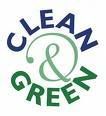


























 By Robin Lloyd
By Robin Lloyd